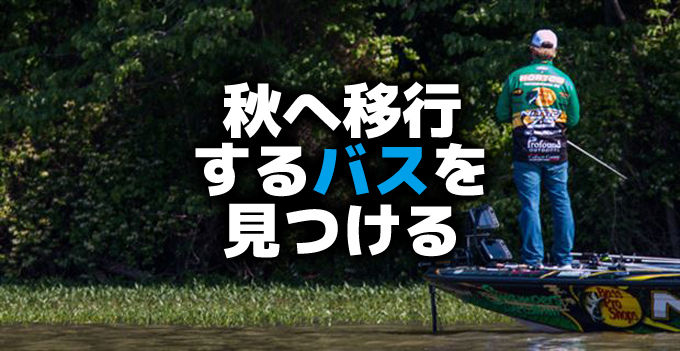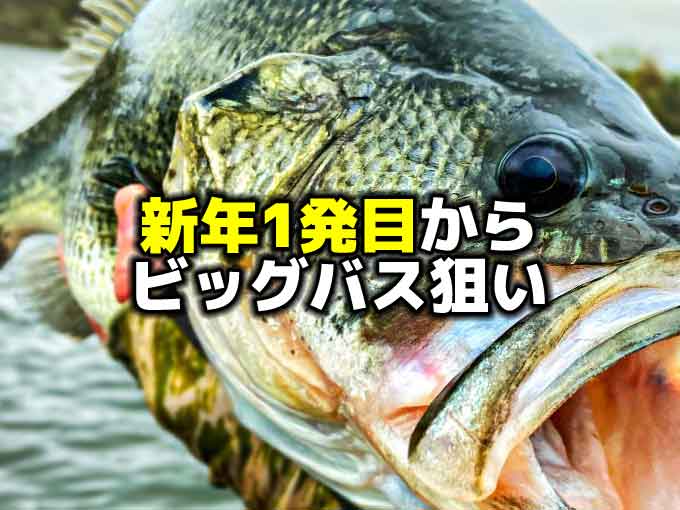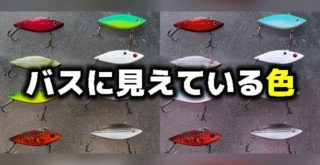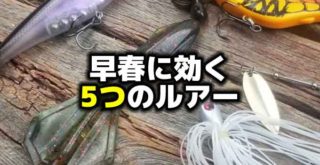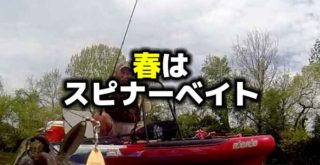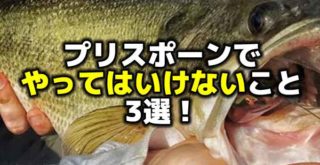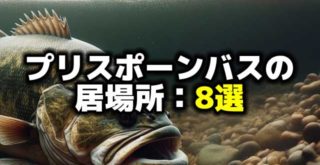前線通過後の3つの釣り方?

こんにちは!店長の小山です!
本日は海外サイトから”3 Post Frontal Bass Fishing Techniques”という記事を引用してご紹介いたします♪
引用先:scout.com”3 Post Frontal Bass Fishing Techniques”by WALKER SMITH 07/02/2013(海外サイトです)
バス釣りに限らず、前線が通過するということは気象条件がそれまでと大きく変わってしまうことを意味しますので、まあまあ厄介です。
良い方に転ぶか、悪い方に転ぶか。それはやってみないとわからないのですが、計画性のあるアングラーさんほど、当初から予定していたプランが変わってしまうことは間違いありません。こんなことになるとメンタルもやられてしまい、余計に大変な思いをしますよね(笑)
この記事に登場するアメリカのバスプロ、ジョン・クルーズさんは、こんな困難な状況が、実は非常に生産的な日に変わるとし、前線にやられてしまうなんてことはないようです(基本的には冬以外の話ですが)。
それではその3つのテクニックを読んで、前線による天候の変化に対抗するのに役立てましょう。
まずは状況を確認します。
前線はバスフィッシングにどのような影響を与えますか?
It’s not uncommon to hear anglers condemn post frontal conditions, but it’s important to understand how fronts affect bass behavior. While some blame high barometric pressure and inactive fish, Crews has a more basic take on the situation.
“After a front moves through an area, it usually gets very calm and sunny,” Crews said. “The lack of surface disturbance and the increase in light penetration allows bass to see much better than they usually do. As a result, it’s easier for them to detect the slightest unnatural characteristic of your presentation.”
In addition to prompting wary bass behavior, sunny, post frontal days leave bass with fewer places to hide. Because they are ambush feeders, bass prefer to hide in underwater cover and attack prey when least expected. When they’re forced to tuck far underneath a submerged log or dock, their strike zone is drastically decreased.
“Whenever it’s cloudy or overcast, bass don’t have a problem roaming around because the darker conditions make them feel concealed,” Crews said. “But when they get glued to cover in post frontal weather, they won’t move near as far to hit a bait. They’ll still bite and you can still catch them, but you’ve got to have the right approach.”
アングラーが前線通過による状況を非難するのは珍しいことではありませんが、前線がバスの動作にどのように影響するかを理解することは重要です。高い気圧と低活性なバスを原因とするものもありますが、クルーズはより基本的な取り組みをしています。
「前線があるエリアを通過した後は、通常、非常に静かな晴れになります」とクルーズは言いました。 「水面に乱れがなく、光の透過性が向上しているため、バスは通常よりもはるかに良く見えます。結果として、あなたのプレゼンテーションのわずかな不自然さにより簡単に見切ってしまいます。
バスの動きを注意深くさせてしまうことに加えて、前線通過後の晴れた日は、隠れることのできる少ない場所へバスを追いやります。バスは待ち伏せタイプのフィーダーであるため、バスは水中のカバーに隠れて、不意に攻撃をします。それらが水面下の丸太やドックの下まで押し込まれると、そのストライクゾーンは大幅に減少します。
「それが曇っているときは、ローライトによりバスが隠れているように感じるのでバスは周りを回遊するのに問題がありません」とクルーズは言いました。「しかし、バスは前線通過前にカバーに入ってしまうと、自分の遠くまで動いてルアーにヒットすることはありません。バイトに持ち込み、キャッチすることはできますが、そのためには正しいアプローチをしなければなりません」
前線通過後の釣り方と3つのテクニック
Most of us have been taught to slow down when bass fishing after a big weather front, and that’s true—to some extent. While looking for a productive tournament pattern, Crews covers water at a rapid pace until he starts getting bites. Then, and only then, will he slow down his approach.
“Although post frontal fish can be hard to catch, they can also be easier to pattern,” Crews said. “My biggest priority is covering water—I’m not going to spend much time fishing areas that don’t produce. If I get a bite on a dock, I’m going to shoot to the next dock, slow down and begin fishing more thoroughly. Sometimes all it takes is a couple of bites to really key you in on what the fish are doing.”
私たちの大部分は、前線通過後にバス釣りをするときはスローダウンするように教えられていますが、それはある程度は真実です。生産的なトーナメントパターンを探すとき、クルーズはバイトを得るまでは急速なペースで広く水域を撃っていきます。その後、アプローチをスローダウンさせます。
「前線通過後のバスは捕まえるのが難しいかもしれませんが、パターンを作るのは簡単です。「私の最大の優先事項は広い水域をカバーすることです – 私はバスのいない場所で多くの時間を費やすつもりはありません。もしドックでバイトがあったら、次のドックを撃つときは、スローダウンしてより徹底的に釣ります。時々、2、3回のバイトでどのように釣ったらいいのかすべてわかることがあります。」
1.シェイキーヘッド(ボトムで立ち上がるタイプのジグヘッド)
When the fishing gets tough following a weather front, the first thing Crews picks up is a 3/16-ounce Missile Baits Warlock Head paired with a Missile Baits Fuse 4.4 on 8-pound Vicious Pro Elite Fluorocarbon. It’s a deadly combination that has accounted for many of his fish catches.
“I use this combination as a search tool because it catches so many fish,” Crews said. “I’ll fish it on points, under and around docks, on bare banks and on rip rap—this rig will catch fish in a variety of situations.”
When throwing a shaky head, Crews makes very long casts to efficiently cover water. When the bait reaches the bottom, he slowly drags the bait while maintain bottom contact. When he feels a piece of cover, he’ll slow his presentation while incorporating occasional pops and twitches into his retrieve.
“The biggest key is to drag it without getting slack in the line,” Crews said. “The minute you get slack in your line, a shaky head is going to settle into any nearby crevices and get hung. It’s always important to keep a little bit of pressure.”
Crews prefers the Missile Baits Fuse 4.4 during post frontal conditions for one reason—it’s natural movement. The thin arms and pinchers have a very subtle movement without any rod movement. Although very soft and pliable, he also considers it an economical choice as he often catches up to 8 fish on a single bait.

前線通過後に釣りづらくなると、クルーズが最初に取り上げるのは、8ポンドのフロロにミサイルベイツ・ヒューズ 4.4と3/16オンスのミサイルベイツ・ワーロックヘッドの組み合わせです。彼の漁獲量の多くを占める素晴らしい組み合わせです。
「これは多くの魚を捕獲するため、この組み合わせを検索ツールとして使用しています。 “私は、ドックの下や周辺、草木のないバンク、リップラップなどのポイントで釣り上げます。このリグは、さまざまな状況で魚を捕まえることができます。"
シェイキーヘッドを投げるとき、クルーズは水を効率的にカバーするために非常にロングキャストをします。ルアーがボトムに達すると、ボトムの接触を維持しながらルアーをゆっくりと引きずります。障害物を感じたら、時折ポップやトゥイッチを取り込むスローなプレゼンテーションをします。
「最大の鍵は、ラインのたるませないように引くことだ」とクルーズ氏は言う。「ラインにたるみがあると、シェイキーヘッドがなにかに挟まって引っかかってしまいます。ちょっとした力をかけて常にラインを張ることは重要です」
クルーズは、ミサイル・ベイツ・ヒューズ4.4を、前線通過後の状況で好むひとつの理由として、自然な動き、細いアームとハサミは、ロッドを動きがない時でも非常に微妙な動きをしています。非常に柔らかく柔軟性はありますが、しばしばひとつのワームに8匹のバスをキャッチすることもあるので、経済的な選択と考えています。
2.ダウンショット
When the bite gets really tough for Crews, he breaks out his drop shot rig—a Missile Baits Drop Craw rigged on a no. 2 Gamakatsu Octopus Hook on 6-pound Vicious Pro Elite Fluorocarbon. Although his bait selection is extremely small, it plays into his favor in post frontal conditions.
“The Drop Craw is so small, sometimes I think the bass can’t really tell what it is, which spurs a lot of bites out of pure curiosity,” Crews said.
Because bass tend to get much tighter to available cover or the bottom after weather fronts, Crews uses a shorter leader for this drop shot rig. He fishes it in the same areas as he would a shaky head, but with an even slower presentation. After a long cast, he’ll drag his drop shot until he finds a piece of cover and simply hold it still while the Drop Craw sways with the motion of the water. Too much movement can spook these wary bass.
“As much as I’ve tried to develop a steadfast rule regarding when a drop shot is better than a shaky head, I really don’t think there is one,” Crews said. “That’s why it’s always important to keep switching presentations until you start getting bites.”

クルーズはバイトを取るのが本当にタフな状況を、ダウンショットリグで打ち破っている。 6ポンドのフロロにミサイルベイツ・ドロップクローをがまかつ・オクトパスフックの#2にリグる。ワームの選択は彼としては非常に小さいが、それは前線通過後の状態時のお気に入りである。
「ドロップ・クローは非常に小さく、時にはバスが本当にそれが何であるかを知ることができないと思う。純粋に好奇心から多くのバイトを引き起こすのではないか」とクルーは語る。
前線の通過後は、バスは利用可能なカバーやボトムにタイトに着く傾向があるため、クルーズはこのダウンショットリグのリーダーをより短くしています。シェイキーヘッドと同じエリアでバスを釣るが、より遅いプレゼンテーションをする。ロングキャストの後、カバーを見つけるまでドロップショットを引いてきます。ドロップクローが水の動きだけで揺れるので、そのまま待っていてください、あまりにも多くの動きは、慎重なバスを警戒させてしまいます。
「ダウンショットがシェイキーヘッドよりも優れているかどうかについて色々と試してきたが、私は優れたものが1つだとは思わない」とクルーは語った。 「バイトが出るようになるまで、常にプレゼンテーションを切り替えることが重要なのです」
3.フィネスなフリッピング
If he finds himself in an area with too much cover for the 2 aforementioned techniques, Crews scales down his usual flipping rig and goes to work. By threading a Missile Baits Missile Craw on a 3/0 Gamakatsu Heavy Cover Flippin’ Hook with a 1/4-ounce weight on 17-pound Vicious Pro Elite Fluorocarbon, he’s able to reach stingy post frontal bass in the thick stuff.
“The Missile Craw has a straight, no-action fall that just darts,” Crews said. “Its fast fall really gets their attention and its neutrally buoyant material gives it a ton of action.”
Crew’s presentation is an important element when finesse flipping. Instead of hopping the bait erratically in hopes of drawing a reaction strike, he drags it along the bottom, the same way he would a shaky head. Even when he’s on a hot bite and a solid pattern, he gets many more bites fishing the Missile Craw slowly.
“It’s usually not too difficult to duplicate finesse flipping patterns on laydowns, docks or even grass clumps,” Crews said. “It’s very important to not make it too complicated—it’s amazing how they’ll find and eat that thing.”
Don’t let the summer’s inevitable post frontal weather keep you at home this year. If you understand how fronts affect bass, cover water quickly and use these 3 techniques, you’ll be able to catch fish in all types of conditions.

2つの前述のテクニックをしようとしたがあまりにもカバーが濃いエリアだった場合、クルーズは通常のフリッピングリグをサイズダウンさせる。ミサイルベイツ・ミサイル・クローを、がまかつ・ヘビーカバーフリッピンフック3/0に1/4オンスのシンカー、17ポンドのフロロカーボンに通すことで、前線通過後の密集したカバーに入りこんだバスに手を差し伸べることができます。
「ミサイル・クローは真っ直ぐで、フォール時はノーアクションで、ダーツのようだ」とクルーは語った。 「その素早いフォールは本当に注目を集め、やや浮力のあるマテリアルにより大きなアクションをもたらします。」
フィネスフリッピングをするとき、クルーズのプレゼンテーションは重要な要素です。リアクションバイトを期待して不規則にルアーをホップさせるのではなく、彼はシェイキーヘッドと同じようにボトムに沿って引きずります。激しいバイトやしっかりしたパターンがあっても、彼はミサイルクローでゆっくりと釣り、もっと多くのバイトを得る。
「レイダウン、ドック、さらには濃い茂みでのフィネスフリッピングパターンは、通常はそれほど難しいことではありません。バスがどうやってそれを見つけ、食べるのかに驚かされるためには、それを複雑に考えすぎないことが重要です。」
前線の通過を恐れない!
いかがでしたか。
前線には寒冷前線と温暖前線がありますが、基本的にはどちらも前線通過中に天気が悪くなり、通過後はパーッと晴れますよね。
このピーカン状態が好きじゃないという方が結構多いんですが、ピーカンそのものが嫌いというより、曇りや雨から急にパーッと晴れてしまうのが嫌なんですよね。私もそうなんです。眩しいのが好きじゃないっていうのもあるんですけど。
でも、この記事のおかげで、そんな曇りや雨からの晴れという急な天候の変化への苦手意識はなくなりそうです。
前線の通過がバスに対してどんな影響を与えるかを理解して、上の3つのリグとテクニックを使うことですね♪
ルアーやフックなどの画像は参考までに♪
それでは、また。
毎度ありがとうございます!







